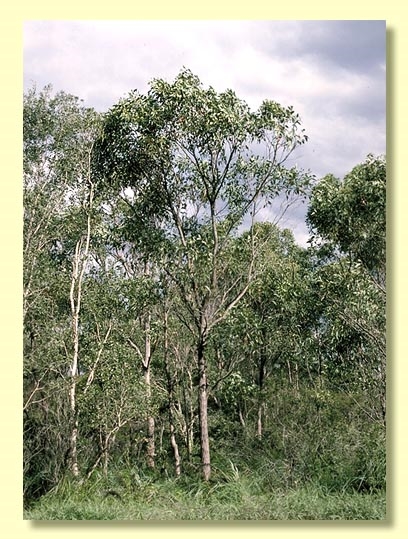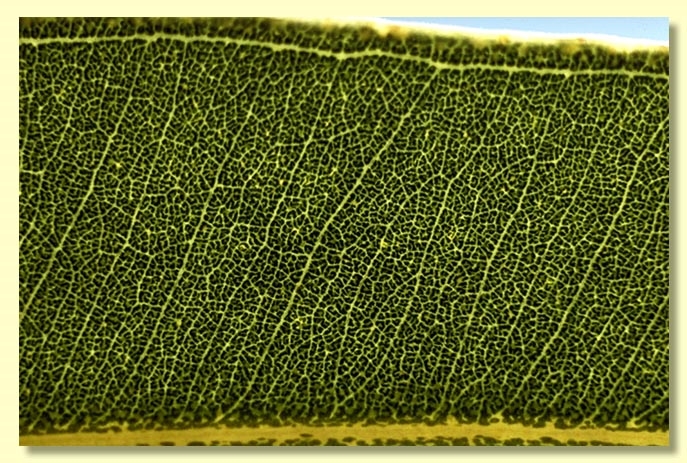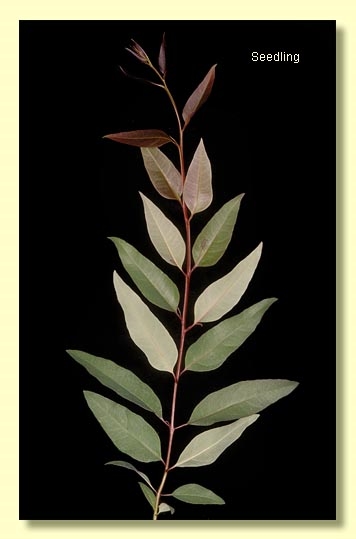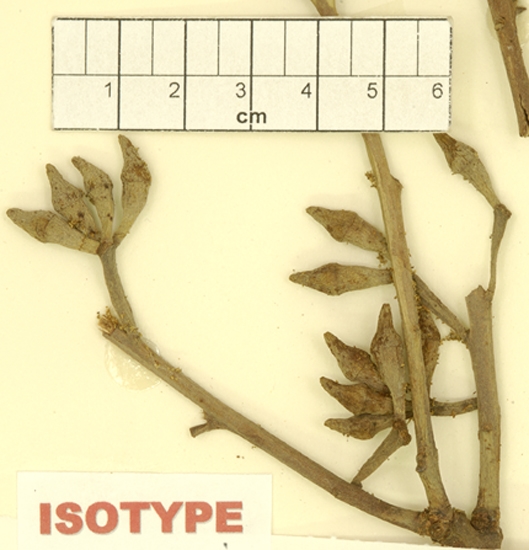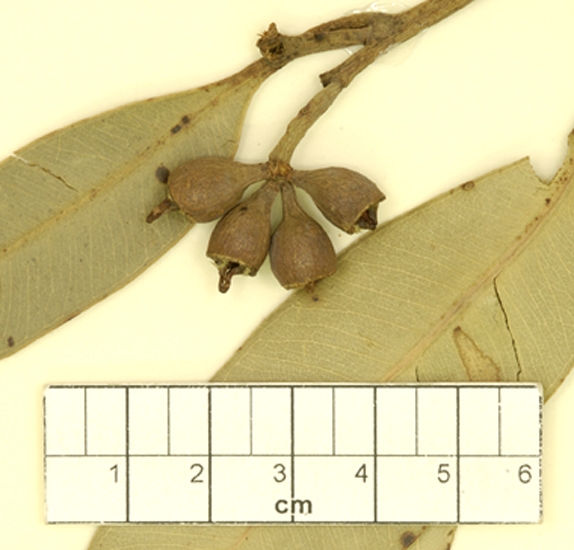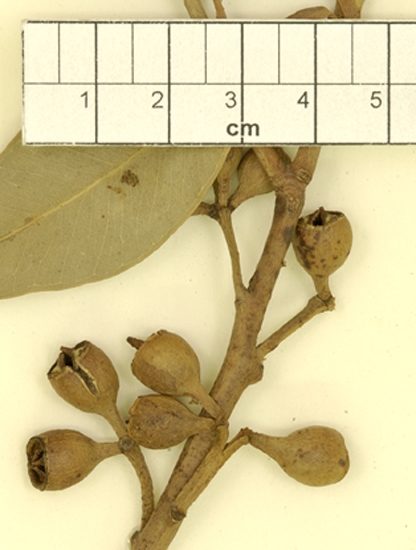Euclid - Online edition
Eucalyptus robusta
Eucalyptus | Symphyomyrtus | Latoangulatae | Annulares
T: Port Jackson, NSW, 1793, J.White s.n.; holo: LINN; ISO: BM, G.
Eucalyptus multiflora Poiret, Lamarck's Encycl. Suppl. 2: 594 (1812). T: 'elles sont toutes deux originaires de la Nouvelle-Hollande'.
Eucalyptus robusta var. bivalvis (Blakely) Blakely, Key Eucalypts 2nd edn, 101 (1955) as bivalva; E. multiflora var. bivalvis Blakely, Key Eucalypts 98 (1934). T: Coffs Harbour, NSW, 28 July 1931, W.A.W. de Beuzeville 256: holo: NSW; iso: BRI, CANB.
Bark rough to small branches, thick, fibrous, spongy, reddish-brown to grey-brown.
Juvenile growth (coppice or field seedlings to 50 cm): stems square in cross-section, sometimes winged; juvenile leaves always petiolate, opposite for 5 to 7 pairs then alternate, ovate to broadly lanceolate, 6–19 cm long, 2.5–8 cm wide, bases round to tapering, discolorous, dull, green.
Adult leaves alternate, petiole 1.5–3 cm long; blade broadly lanceolate to ovate, 8.5–17 cm long, 2.5–7 cm wide, base tapering to petiole, discolorous, glossy, green, strongly penniveined, moderately to densely reticulate, intramarginal vein parallel to and just within margin, oil glands mostly island or apparently absent.
Inflorescence axillary unbranched, peduncle broadly flattened, 1.5–3 cm long, buds 9 to 15, pedicellate (pedicels 0.4–1.5 cm long). Mature buds fusiform to pyriform (1.6–2 cm long, 0.6–0.9 cm wide), yellow or creamy, scar present, operculum conical and beaked, stamens inflexed, anthers cuboid to oblong, versatile, dorsifixed, dehiscing by longitudinal slits (non-confluent), style long, stigma tapered, locules 3 or 4, the placentae each with (6)8 vertical ovule rows. Flowers white.
Fruit pedicellate (pedicels 0.5–1.2 cm long), cylindrical, 1–1.6 cm long, 0.7–1.1 cm wide, disc descending, valves 3 or 4, remaining joined at tips when fruit has dehisced, enclosed or near rim level, rarely slightly exserted.
Seeds light brown to yellow, 1.2–1.8 mm long, pyramidal or obliquely pyramidal, dorsal surface smooth, hilum terminal.
Cultivated seedlings (measured at ca node 10): cotyledons bilobed; stems square to winged in cross-section; leaves always petiolate, opposite for 5 to 7 nodes then alternate, lanceolate, 9–13.5 cm long, 3–5 cm wide, base tapering, margin entire, apex pointed, discolorous, dull, dark green above, paler beneath.
A small to medium-sized tree of coastal New South Wales from about Moruya north to north-west of Bundaberg in south-eastern Queensland, including North Stradbroke, Moreton and Fraser Islands. One of the red mahoganies, E. robusta is recognised by the thick fibrous rough bark, large, discolorous leaves with wide-angled side-veins, large buds and cylindrical fruit with the valves of the fruit remaining joined across the orifice, with this latter feature being unique in eucalypts in eastern Australia. Eucalyptus robusta usually occurs in swampy sites.
Eucalyptus robusta belongs in Eucalyptus subgenus Symphyomyrtus section Latoangulatae because cotyledons are bilobed, leaves are discolorous and have side-veins at a wide angle to the midrib and buds have two opercula. Within this section, E. robusta is one of seven species forming series Annulares (the red mahogany group), as it has ovules in (6)8 rows, seeds pyramidal and bark rough over the trunk. The other six species are E. pellita, from coastal north Queensland and New Guinea; E. urophylla, from Timor and other islands to the north-west of Australia; E. scias, (with two subspecies) scattered in coastal and subcoastal New South Wales; E. notabilis, scattered in coastal and subcoastal New South Wales and south-eastern Queensland; E. resinifera, (with two subspecies) widespread in coastal New South Wales and Queensland; and E. botryoides, from coastal eastern Victoria and southern New South Wales.
Within this red mahogany group it is closest to E. botryoides and is distinguished by having larger buds and fruit, with the tips of the valves joined across the orifice.
The other red mahoganies are easily separated by having cup-shaped to funnel-shaped fruit (not cylindrical like E. robusta), and exserted valves on the dehisced fruit.

